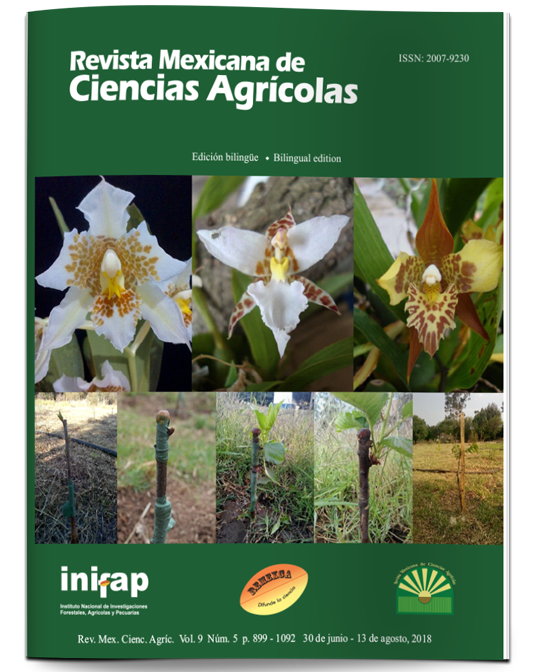Analysis of competitiveness and profitability of biodiesel production from moringa grains in Chiapas and Yucatán, Mexico
DOI:
https://doi.org/10.29312/remexca.v9i5.716Keywords:
Moringa oleifera, biodiesel, competitiveness, profitability of biofuelsAbstract
The production of biofuels worldwide has grown exponentially in recent years, its development has been linked to the increase in the price of oil and the growing social awareness developed around the care of the environment. The world is currently betting on biodiesel as a partial alternative to fossil fuels given that it comes from renewable sources and significantly reduces carbon dioxide emissions into the atmosphere. Technological advances broaden the range of raw materials for biofuels, some of which; how fast-growing grasses and trees can grow in less fertile and drought-prone regions and compete less with crops for the production of human and animal food such as corn, sugar cane, soybeans and rapeseed, such this is the case of Moringa oleifera, which is currently cultivated in practically all the tropical, subtropical and semi-arid regions of the world, since it can grow under conditions of water scarcity. The objective of this research was to economically evaluate the integral production of biodiesel with moringa grains considering two agroecological zones of raw material production, the Soconusco, Chiapas and Uxmal, Yucatan and their transformation to biodiesel through the process of industrial transesterification in a pilot plant. For the agricultural and industrial phases, profitability indicators were generated such as the internal rate of return (TIR), net present value (VAN) and equilibrium point (PE). The results indicated that the agricultural production is highly profitable due to the additional use of the leaves as co-product with TIR of 109 and 130% for the Soconusco, Chiapas and Uxmal, Yucatán, respectively, while the industrial phase, considering zero subsidies to the production of biodiesel was profitable with TIR of 53% in Uxmal, Yucatan and 37% in Soconusco, Chiapas.
Downloads
Downloads
Published
How to Cite
Issue
Section
License
The authors who publish in Revista Mexicana de Ciencias Agrícolas accept the following conditions:
In accordance with copyright laws, Revista Mexicana de Ciencias Agrícolas recognizes and respects the authors’ moral right and ownership of property rights which will be transferred to the journal for dissemination in open access. Invariably, all the authors have to sign a letter of transfer of property rights and of originality of the article to Instituto Nacional de Investigaciones Forestales, Agrícolas y Pecuarias (INIFAP) [National Institute of Forestry, Agricultural and Livestock Research]. The author(s) must pay a fee for the reception of articles before proceeding to editorial review.
All the texts published by Revista Mexicana de Ciencias Agrícolas —with no exception— are distributed under a Creative Commons License Attribution-NonCommercial 4.0 International (CC BY-NC 4.0), which allows third parties to use the publication as long as the work’s authorship and its first publication in this journal are mentioned.
The author(s) can enter into independent and additional contractual agreements for the nonexclusive distribution of the version of the article published in Revista Mexicana de Ciencias Agrícolas (for example include it into an institutional repository or publish it in a book) as long as it is clearly and explicitly indicated that the work was published for the first time in Revista Mexicana de Ciencias Agrícolas.
For all the above, the authors shall send the Letter-transfer of Property Rights for the first publication duly filled in and signed by the author(s). This form must be sent as a PDF file to: revista_atm@yahoo.com.mx; cienciasagricola@inifap.gob.mx; remexca2017@gmail.
This work is licensed under a Creative Commons Attribution-Noncommercial 4.0 International license.



